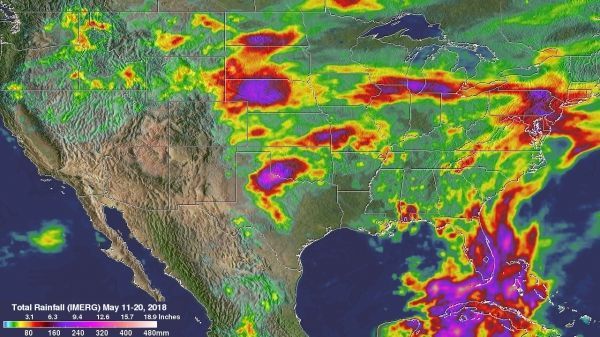For close to two weeks the combination of a nearly stationary front and tropical moisture caused almost continuous precipitation over much of the Mid-Atlantic. Using data from a constellation of satellites, NASA calculated the extreme rainfall that occurred in parts of the U.S.
Record amounts of rain fell over the eastern United States with over a foot of rain reported in some parts of the Mid-Atlantic. The excessive rain led to flooding along several rivers including Washington D.C.'s Potomac River.
Data revealed anomalous rainfall for the period from May 11 to 20, 2018. That analysis used climatology data that were based on measurements gathered by the Tropical Rainfall Measuring Mission (TRMM) satellite from 1997 to 2015. The TRMM satellite collected data that contributed to a unique dataset of global tropical rainfall. The rainfall anomaly analysis was made possible by comparing rainfall data compiled during the twelve year period from 2001 to 2012 to "near real-time" Multi-satellite Precipitation Analysis (TMPA-RT 3B42RT) data. That analysis indicated that Mid-Atlantic rain was falling at a rate of greater than 15 mm (.59 inches) per day above normal. It also indicates that the Mississippi valley was receiving less than normal rainfall during the same period. Much of the desert Southwest was receiving the same or lower than normal precipitation.
Read more at NASA / Goddard Space Flight Center
Image: IMERG data collected during the period from May 11 to 20, 2018 were added together to produce an estimate of total rainfall. The most rainfall occurred in purple areas. CREDITS: NASA / JAXA, Hal Pierce.


